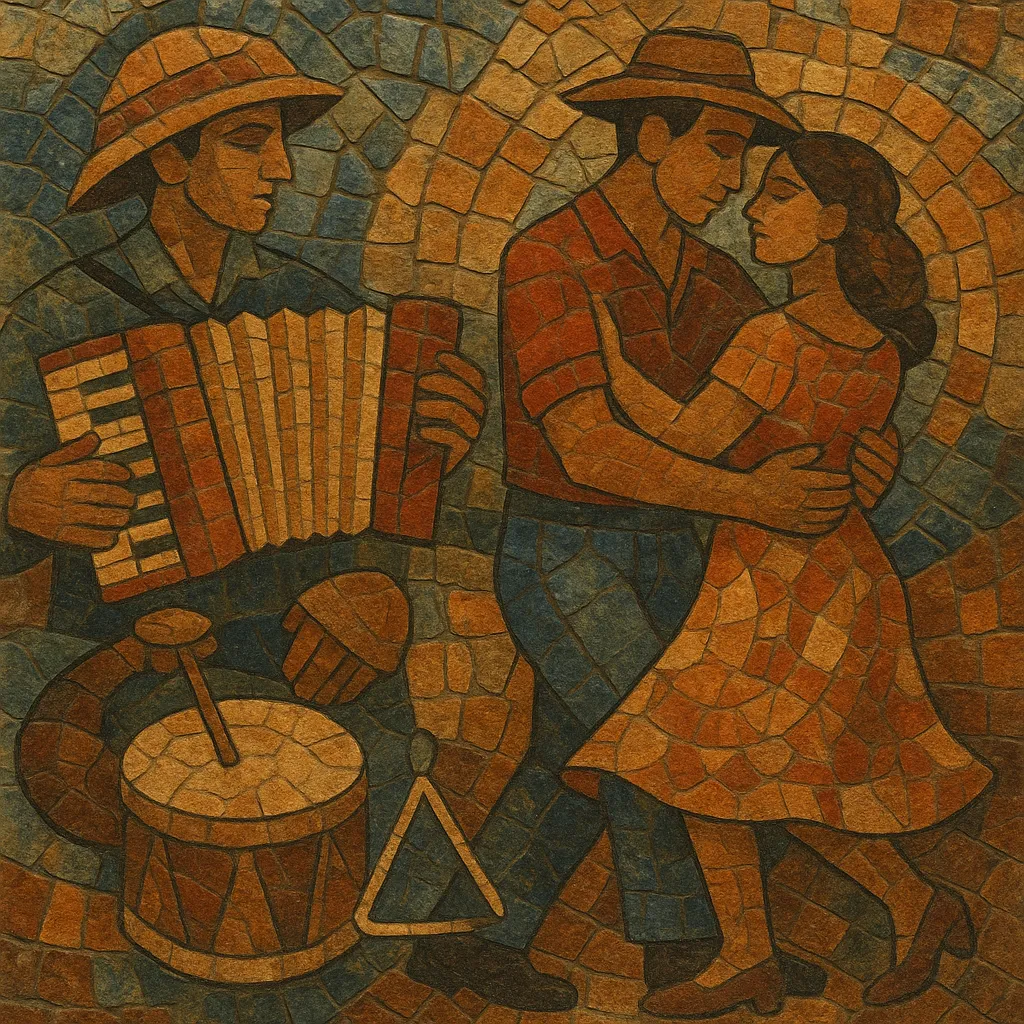Xote is a Brazilian partner-dance rhythm and song style from the Northeast that descends from the European schottische. In Brazil it became one of the core rhythms grouped under the umbrella of forró, alongside baião and arrasta-pé.
Typically set in 2/4 (often felt in a relaxed 4/4), xote features moderate tempos, lilting syncopation, and a smooth, swaying groove designed for close-hold dancing. The hallmark trio—accordion (sanfona), zabumba (bass drum), and triangle—anchors the sound, with acoustic guitar and bass frequently added. Harmonies are diatonic and song forms are verse–refrain, carrying lyrical themes of romance, saudade, everyday life, and the festas juninas (June festivals).
While its roots are 19th‑century European ballroom, xote’s phrasing, accents, and instrumentation were reshaped by Northeastern Brazilian practice, producing a distinctly regional style that thrives in both traditional pé‑de‑serra settings and contemporary pop-forró interpretations.
Xote traces back to the European schottische, a fashionable 19th‑century couple dance that spread through salons and social clubs across the Americas. In Brazil—especially in the Northeast—the schottische was adapted in local festivities and rural dances. Over time, its step patterns and phrasing were retained, but the rhythm and feel were reinterpreted through regional sensibilities and instruments.
In the 1940s–1950s, radio and records helped codify Northeastern dance music. Pioneers such as Luiz Gonzaga standardized the pé‑de‑serra ensemble—accordion, zabumba, and triangle—and presented xote alongside baião and arrasta‑pé under the umbrella of forró. The recorded xote acquired a characteristic moderate tempo, melodic accordion leads, and a smooth, swaying groove that suited close‑hold partner dancing and romantic storytelling.
From the 1970s onward, artists like Dominguinhos and Trio Nordestino broadened xote’s harmonic palette and lyrical depth while keeping its danceable core. In the 1990s–2000s, pop‑forró groups (e.g., Falamansa, Mastruz com Leite) popularized xote nationwide with polished arrangements and radio‑friendly hooks. In the 2010s–2020s, xote’s cadence continued to inform contemporary forró scenes and newer offshoots such as piseiro, while traditional pé‑de‑serra remains central in festas juninas and regional dance halls.


